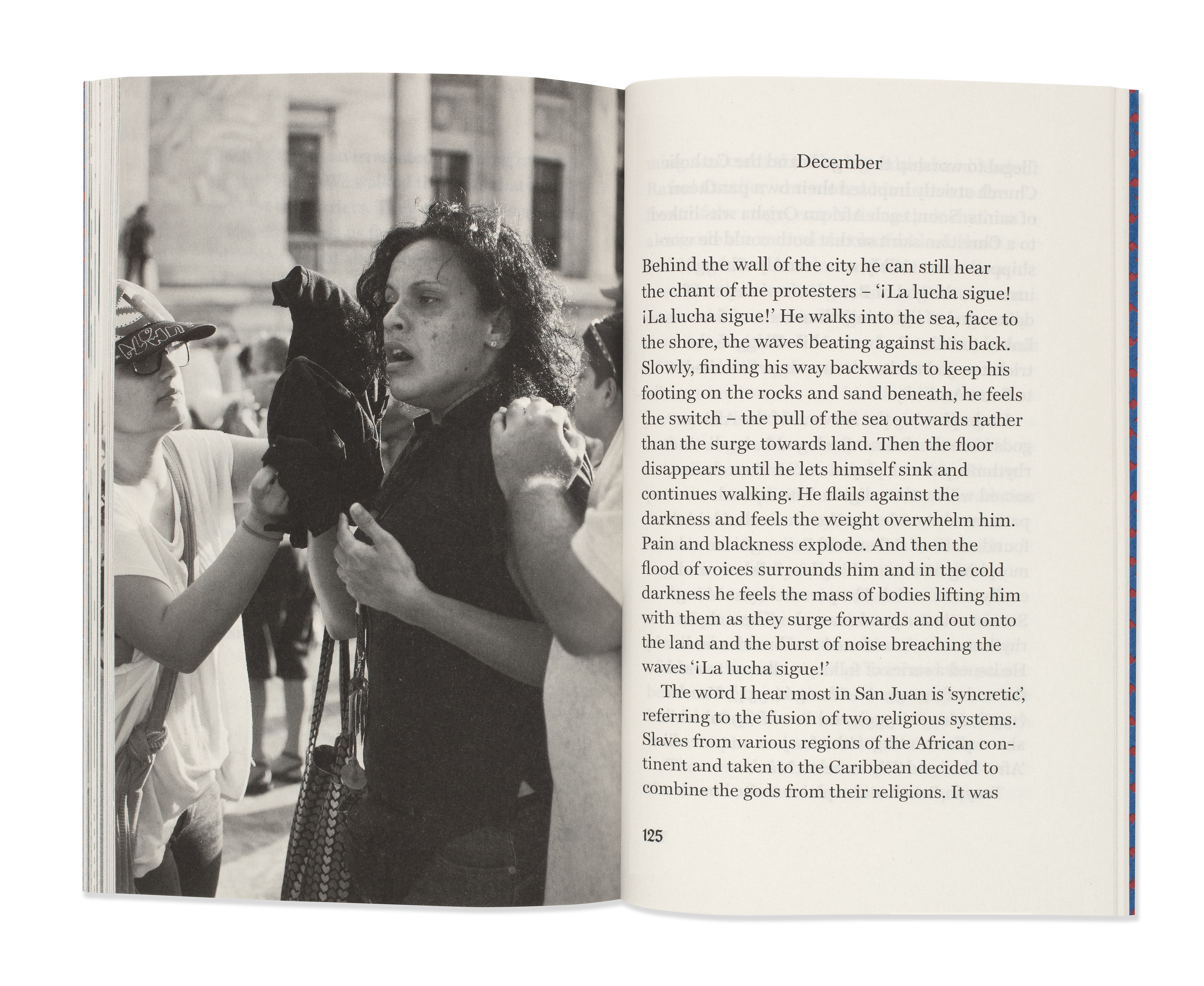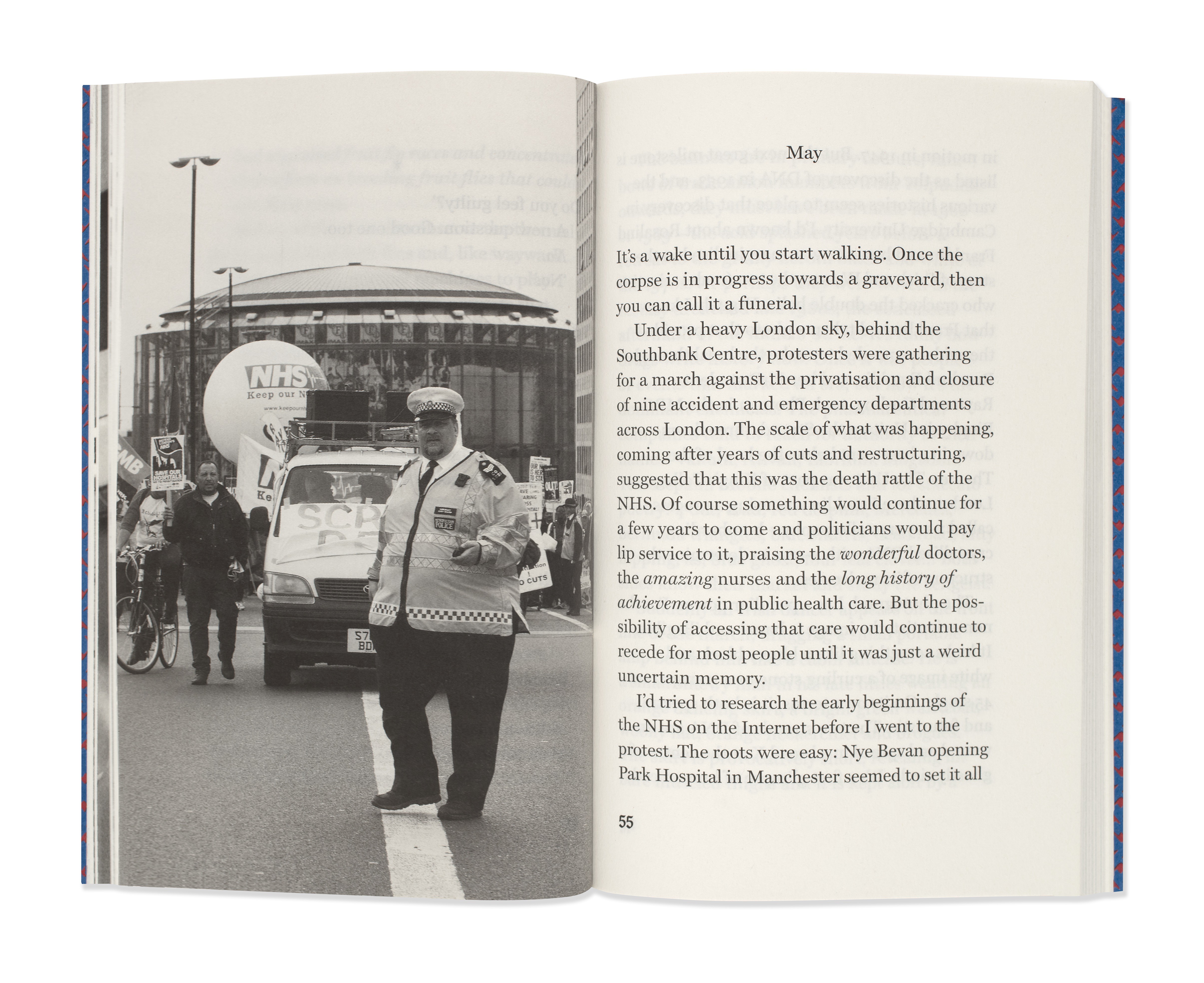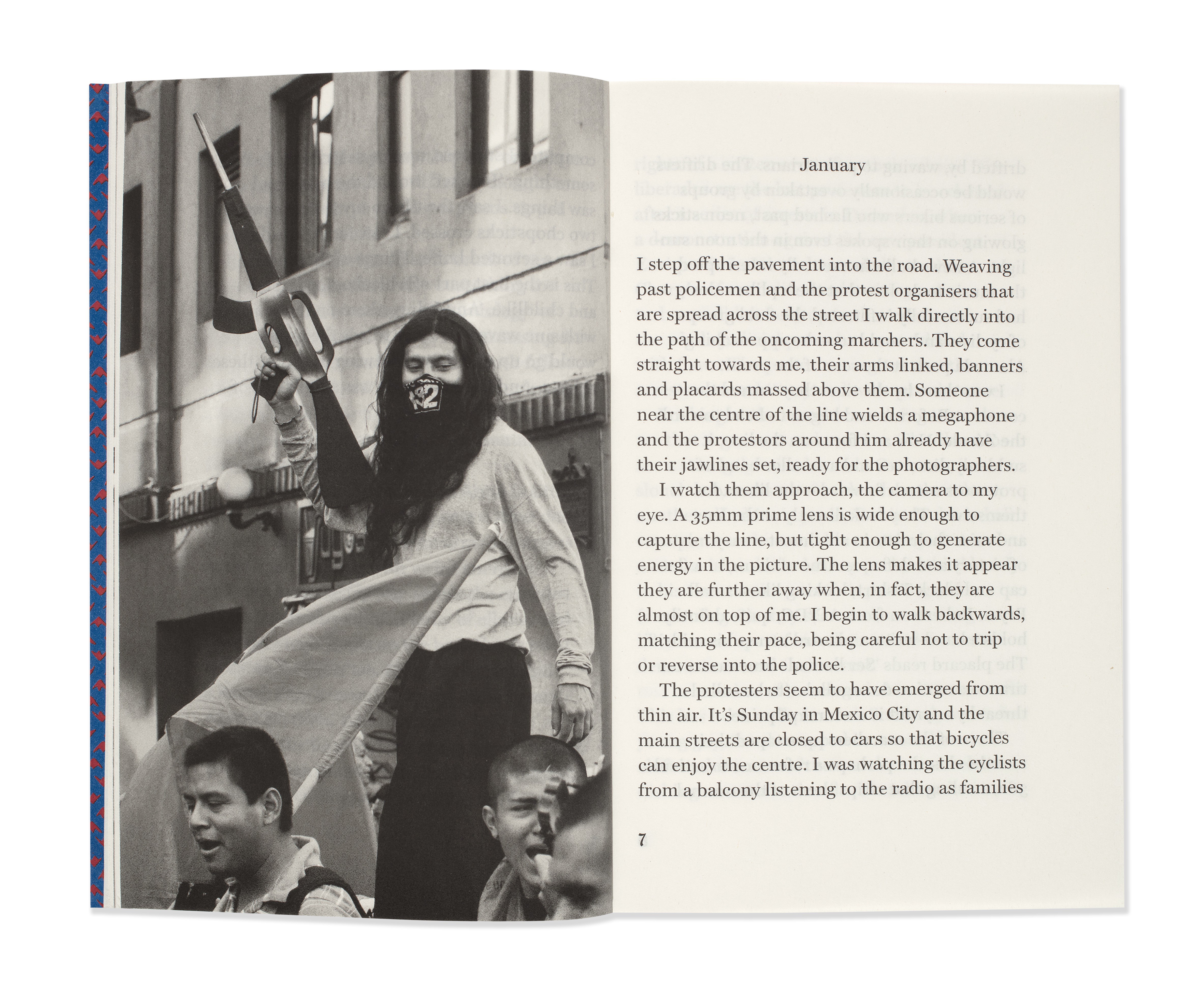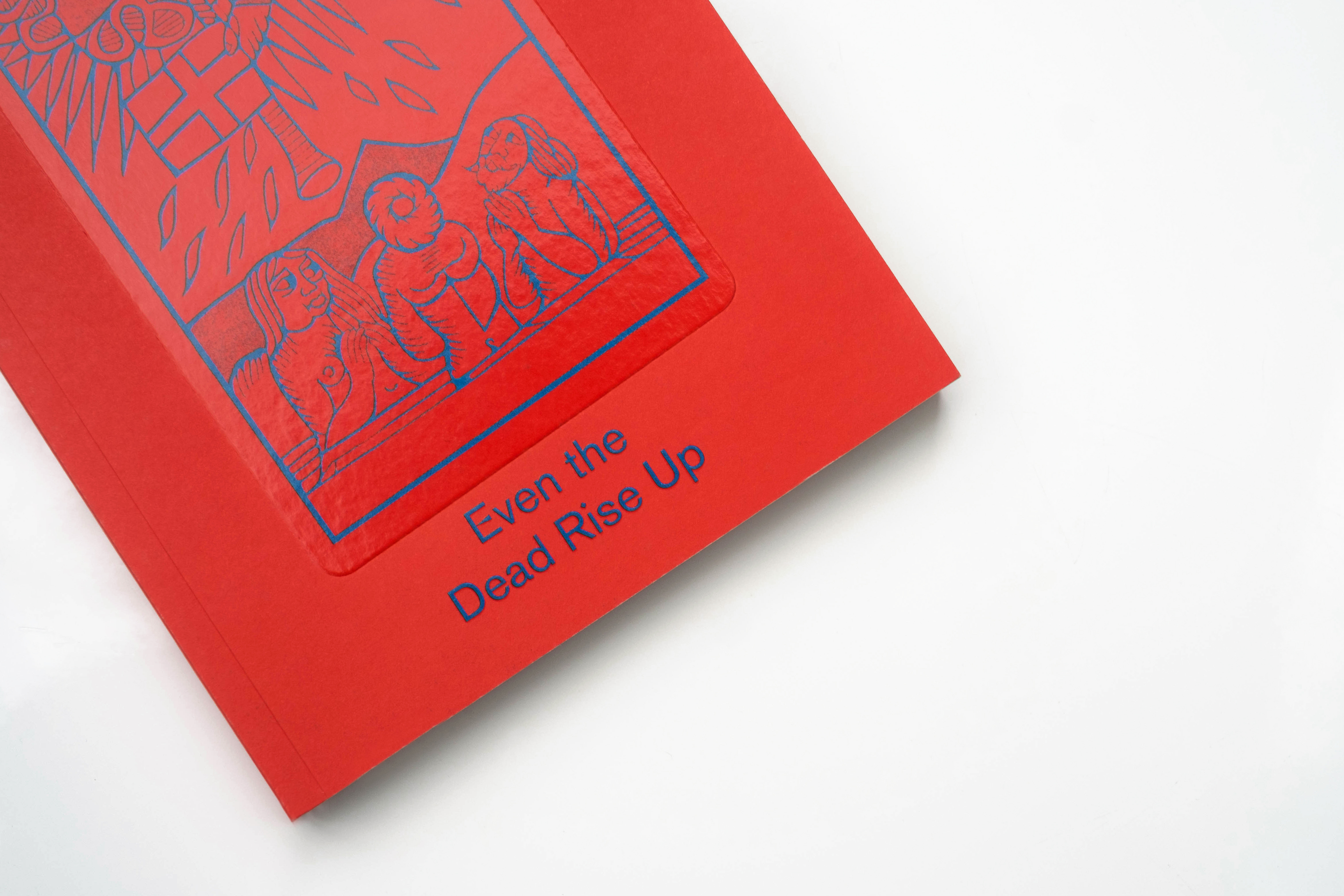
Even the Dead Rise Up is Frances McKee’s first novel, where observations of séances, scientific advances, group education outings, Kurdish protests for the ‘disappeared’, become mixed with his own Tarot influenced visions: a haunting spirit appears; the relation between political resistance and Spiritualism is cast as an insurrectionary force and a millenarian energy, celebrating the ecstatic moment. The book mixes a narrative of dubious fictional standing with research and images from the author's travels to protest movements around the world.
The book, designed together with Moa Pårup, conforms to the conventions of the paperback novel but with all its details carefully augmented by craftmanship and wit. The Tarot card 'sticker' on the cover is in fact embossed and UV varnished, and the title typeface is a twist on Akzidens Grotesk augmented with small details by design studio Europa. The book's typography follows classical proportions, but the sewn binding has enabled detailing such as placing the page numbers in the inner margins.
More info at Book Works
Filed under
Client
- Book Works
Year
2016
Collaborators
Typefaces
- Akzidenz Grotesk Harlequin
- Miller
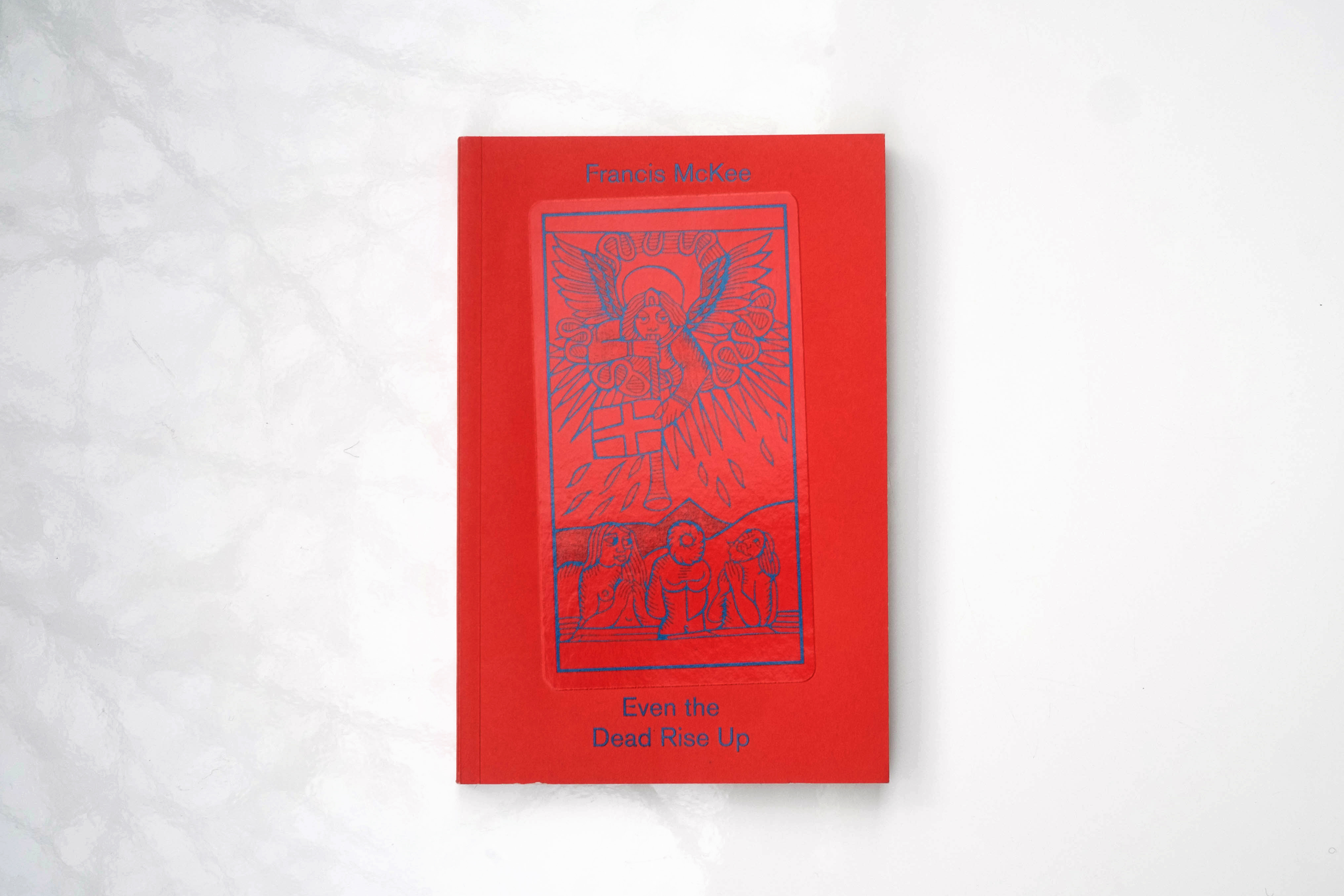
It’s a wake until you start walking. Once the corpse is in progress towards a graveyard, then you can call it a funeral.
Under a heavy London sky, behind the Southbank Centre, protesters were gathering for a march against the privatisation and closure of nine accident and emergency departments across London. The scale of what was happening, coming after years of cuts and restructuring, suggested that this was the death rattle of the NHS. Of course something would continue for a few years to come and politicians would pay lip service to it, praising the wonderful doctors, the amazing nurses and the long history of achievement in public health care. But the possibility of accessing that care would continue to recede for most people until it was just a weird uncertain memory.
I’d tried to research the early beginnings of the NHS on the Internet before I went to the protest. The roots were easy: Nye Bevan opening Park Hospital in Manchester seemed to set it all in motion in 1947. But the next great milestone is listed as the discovery of DNA in 1953, and the various histories seem to place that discovery in Cambridge University. I’d known about Rosalind Franklin and how she was marginalised in the story of Crick and Watson, the two (male) scientists who cracked the double helix. Vaguely I knew that Franklin had taken a photo that provided the evidence needed to make the breakthrough. Rosalind Franklin and her PhD student Raymond Gosling, took Photo 51 in the MRC Biophysics Unit on the Strand, three floors down in a basement below the level of the Thames. The Unit was part of King’s College London where Franklin was using a process called x-ray crystallography – bombarding crystallised DNA with x-rays to determine the structure of its molecules.
Even The Dead Rise Up, Francis McKee, Book Works 2016, Page 55–57
